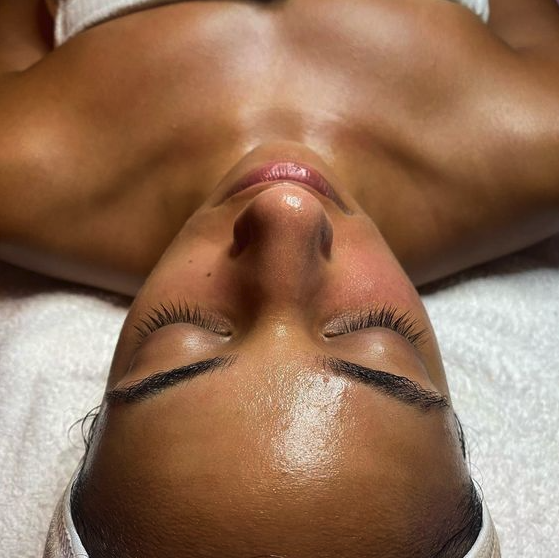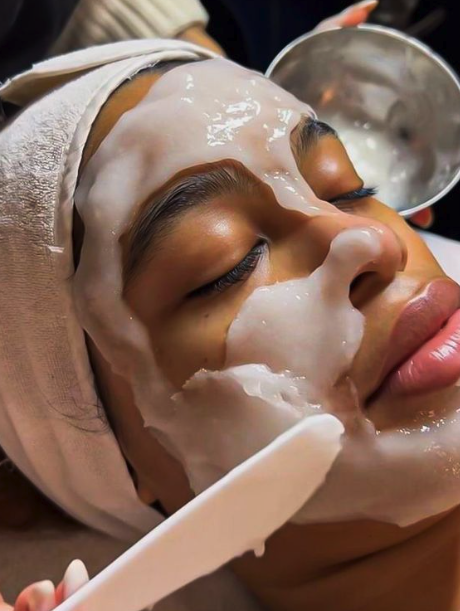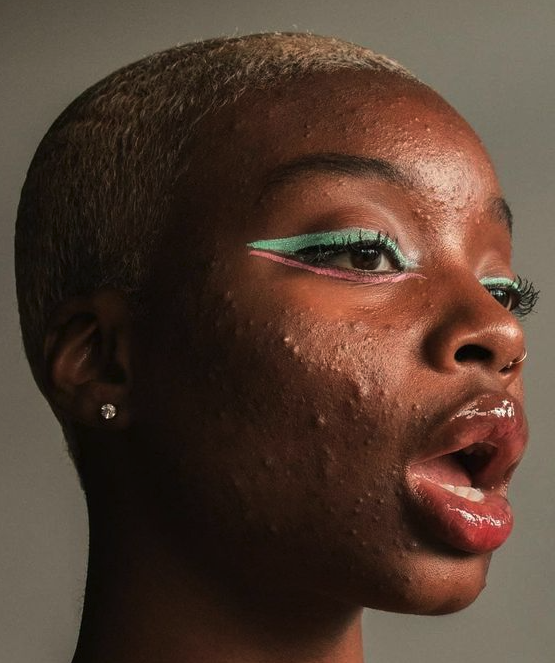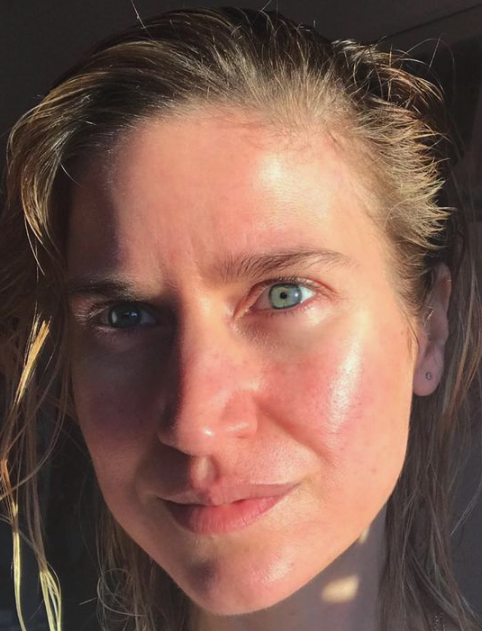This site contains affiliate links. I may earn a small commission, at no extra cost to you.
In this post I’ll compare the difference between a hydrafacial and a more traditional facial. If you’ve ever found yourself googling ‘hydrafacial vs regular facial‘, we’ll do a complete comparison in this post to help you decide what’s right for you.

Hydrafacial vs Regular Facial: What’s the Difference?
Regular facials are all quite different, so it can be hard to compare the two directly. Some of them include facial massage while others are purely skincare focused. Some include LED light therapy, others include manual extraction. Usually, there are a range of different facials to choose from on the menu, and you can often mix and match treatments within them to suit your skin.
Some options you might be able to choose from are:
- Pore-size reduction (although this is severely limited by genetics)
- Aging signs
- Skin tone evenness
- Firmness
- Pigmentation and hyperpigmentation treatment
- Dullness or skin brightness
Nearly all of them are designed to exfoliate the surface of the skin, offer a deep cleansing action and a relaxing experience.
To learn more, read “What is a facial? What you need to know before booking one.“
What are hydrafacial treatments?

Hydrafacial sessions follow set three-step process. The first step is to use a cleanser, the same first step as any normal facial, then they’ll move onto a chemical exfoliant. This is not the same as chemical peels, where the whole treatment is about the chemical exfoliation. This step is a non-invasive treatment, often seen in regular facials too, where an acid is applied to gently exfoliate your skin and break up any clogged pores.
The signature step in a hydra facial is the pen-like tool that they will then use on your skin. The pen is a non-invasive procedure that essentially blasts water into your pores to break up and wash away the debris that was primed by the acid exfoliant. After the exfoliation and hydropen, they put moisture back into your skin, usually with a mixture of hyaluronic acid, peptides and more.
The tool uses ‘vortex-fusion technology’ to create a water vortex on the surface of the skin and in the tip of the tool, which dislodges the gunk from your pores.
The final step of a hydrafacial is that they will usually apply a hydrating serum containing antioxidants.
Benefits of hydrafacial
- Hydrafacials are a great way of deeply cleansing and hydrating your skin from the inside-out. The pen technology they use is patented, and you are unlikely to find it in other facials.
- Hydrafacials are pretty good for treating different skin types, but especially good for congested skin due to the water-blasting technique that clears out pores.
- The immediate results include brighter skin, hydrated skin and decongested skin
One of the main drawbacks, in my opinion, is that a hydrafacial doesn’t really encourage your skin to produce less oil or behave any differently. In other words, once the pores are ‘cleared out’ it doesn’t prevent them from returning to how they were, pretty quickly. Whereas in comparison, oily skin can genuinely become less oily over time if you were to use a retinoid, for example. In my opinion, the best way to improve congestion and oily skin is to use a retinoid, for this reason.
Hydrafacial vs regular facial: a comparison
They key differences between a hydrafacial vs. regular facial should be clear by now, but just in case they’re not let’s do a side by side comparison:
- Both types of facials encourage blood flow to the area which can brighten your skin and increase spot/wound healing. However so does any kind of blood flow e.g. exercise. You can also achieve this with at-home facial massage.
- Hydrafacials typically use more advanced technology to clean out pores, as opposed to a regular facial where hands are often used. Hydrafacials are therefore probably a little more effective for this.
- Neither will really boost collagen production in the long term, unless you go regularly for a very long time. Your better option would be to use SPF and retinoids, since retinoids actually boost collagen production.
- Both leave you with the appearance of healthy skin immediately after.
- Regular facials often include face masks, whereas hydrafacials don’t.
- Both might break you out slightly as one of the possible side effects, since chemical exfoliants can have that effect.
- Neither require a board-certified dermatologist to complete the treatment for you.
- Neither give particularly dramatic results immediately, although this is subjective.
- Regular facials typically include a light massage, whereas hydrafacials don’t.
So which is the best option?
In the long term, I feel that there are better options than both regular facials and hydrafacials for acne. I’m inclined to suggest that hydrafacials are the better option though, but this is purely because they’re standardised and very targeted.
In contrast, facials are completely different wherever you go, and you’re more likely to be treated with products that include essential oils. In my eyes, this feels a bit rogue and haphazard, so I would personally go with the hydrafacial.
Long-term benefits of facials

When you’re choosing a facial, you should keep in mind your specific skin concerns and communicate them to the skincare professional who’s doing your treatment. This way you’re more likely to see better results.
Some of the benefits of regular facials include:
- Gentle exfoliation which can give an instant glow
- A more even skin tone
- Dark spots and brown spots are unlikely to be removed in one session, but over time you can see a decrease in these
- Immediate relief from dry skin
- A temporary reduction in the appearance of pore size, and over time a longer term reduction
- A reduction in the appearance of fine lines, if regular treatments are maintained
- An improvement in your overall skin texture
Will regular facials improve acne breakouts?

You might be wondering how effective traditional facials are for skin issues such as acne breakouts and acne-prone skin, and the results really depend on a few factors:
- How often you have a facial – a single, one off treatment is unlikely to prevent acne from forming in the long term
- How you take care of your skin at home, in between facials
- How you protect your skin at home against sun damage – do you wear SPF? For example
- Whether your acne is hormonal, bacterial or fungal
In general, if you have acne my advice would not be to turn immediately to facials – hydrafacial or otherwise. Most acne seen in adults (roughly 21+) is due to hormones, and therefore is not totally solved by facials. Instead I would recommend optimising your diet and lifestyle for hormonal acne, and trying a retinoid.
Acne scars and facials

Acne scars can be really stubborn and some take longer than others to fade, so you might be tempted to visit medical spas or a salon to see if they can fade yours. Because facials often include skin exfoliation or a light acid peel, you definitely might notice less scars and an overall healthy glow when you leave the spa. Naturally, when you remove dead skin cells with something like salicylic acid or lactic acid, you will see brighter skin.
However, I personally feel you can achieve the same results at home by using acids. Furthermore, you can use them more regularly and consistently that you can visit a spa. Consistency is really the key for best results with any skin concern.
Unfortunately, this only really applies to PIE and PIH, whereas with atrophic scars (ice pick, box car) you are unlikely to see results with a simple facial.
Are facials suitable for sensitive skin?

I have sensitive skin, and due to this it does make me a little (very) cautious of new skincare products and facials. There’s nothing more annoying than when you have your own skincare routine down, to then have a reaction because you introduced something new. At the end of the day you know your skin, so you know just how sensitive it can be. I have only ever had one facial in my life and that was at Skinwork Soho. Whilst I did like it and I had no reaction to it, I wasn’t pulled to return quickly – the glow after it was great though.
There is no clear cut answer about whether sensitive skin can have a facial, it really just depends on how sensitive you are. For example, do you react to nearly every new skincare product? If so, it’s probably not a good idea. You can also assess what types of products are used at the spa you’re going to. Some questions I’d ask include:
- Do the products you use contain essential oils? If so, worth avoiding
- Will you be using products with a strong peeling or exfoliating effect? Some find this desirable but maybe you’re looking more for something hydrating
Now let’s compare hydrafacial vs. regular facial.
This was Hydrafacial vs Regular Facial: What’s the Difference?
You may also like:
- Will a Professional Facial Help with Acne Breakouts?
- The 11 Best Ingredients to Fade Acne Scars in 2023